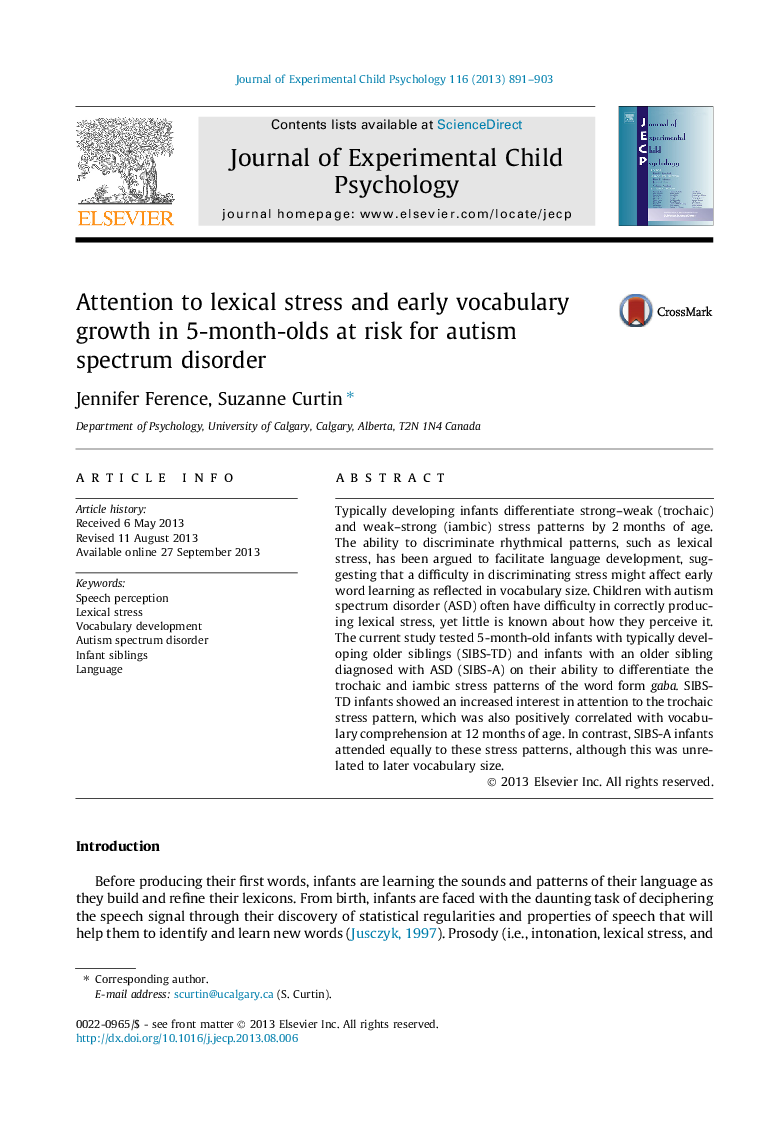| Article ID | Journal | Published Year | Pages | File Type |
|---|---|---|---|---|
| 10453047 | Journal of Experimental Child Psychology | 2013 | 13 Pages |
Abstract
Typically developing infants differentiate strong-weak (trochaic) and weak-strong (iambic) stress patterns by 2Â months of age. The ability to discriminate rhythmical patterns, such as lexical stress, has been argued to facilitate language development, suggesting that a difficulty in discriminating stress might affect early word learning as reflected in vocabulary size. Children with autism spectrum disorder (ASD) often have difficulty in correctly producing lexical stress, yet little is known about how they perceive it. The current study tested 5-month-old infants with typically developing older siblings (SIBS-TD) and infants with an older sibling diagnosed with ASD (SIBS-A) on their ability to differentiate the trochaic and iambic stress patterns of the word form gaba. SIBS-TD infants showed an increased interest in attention to the trochaic stress pattern, which was also positively correlated with vocabulary comprehension at 12Â months of age. In contrast, SIBS-A infants attended equally to these stress patterns, although this was unrelated to later vocabulary size.
Related Topics
Social Sciences and Humanities
Psychology
Developmental and Educational Psychology
Authors
Jennifer Ference, Suzanne Curtin,
